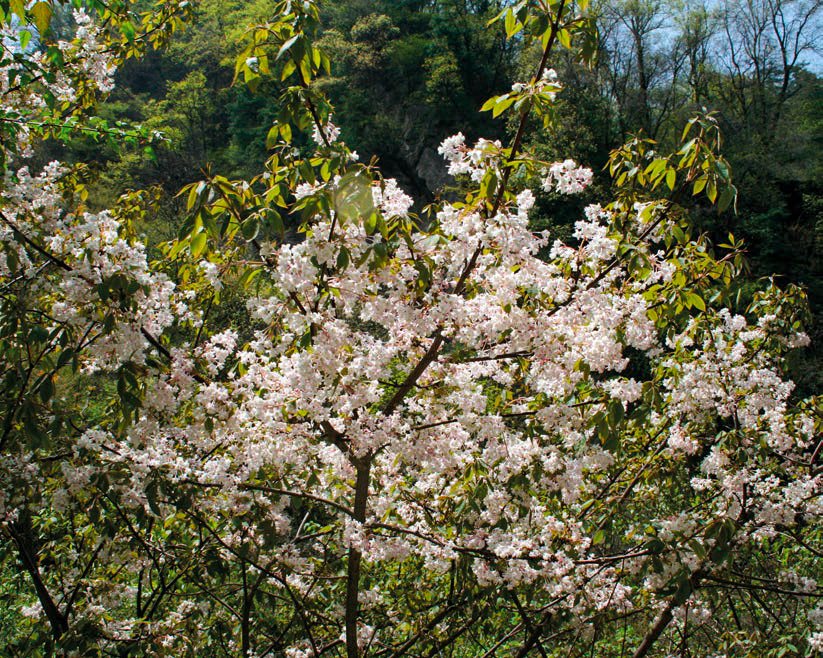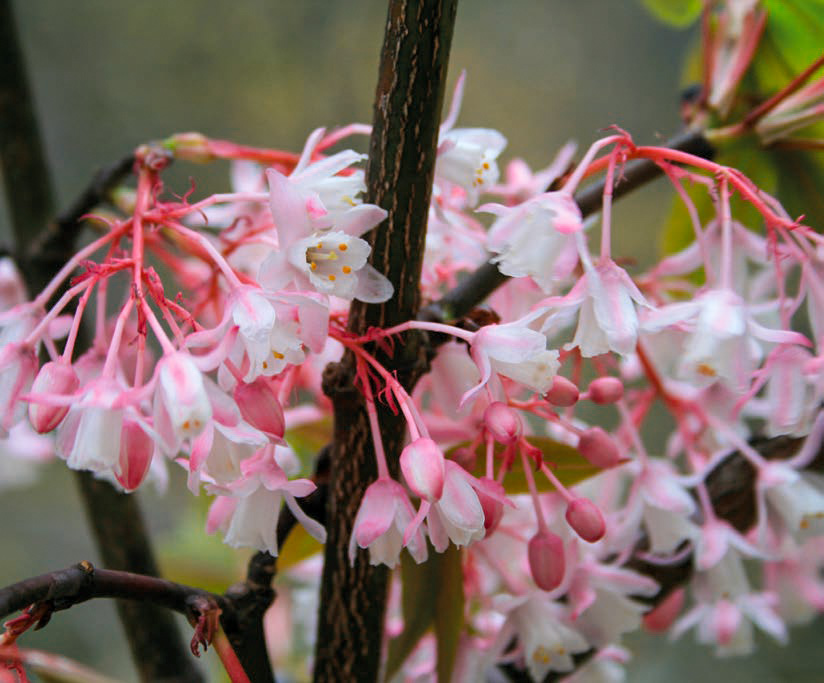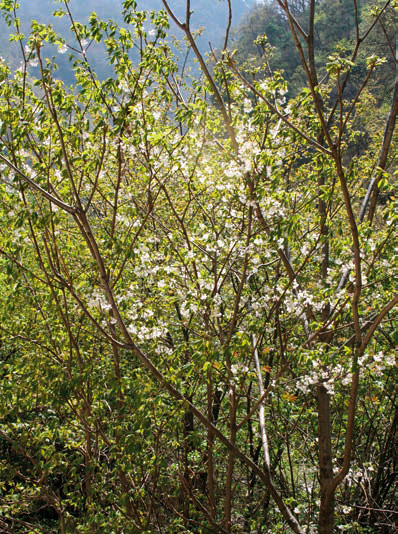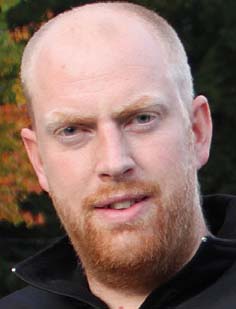The Plantsman’s Choice: Bladdernut
The Plantsman’s Choice: Bladdernut
An exciting and exotic genus with clear seasonal qualities – part 1
Henrik Sjöman and Andrew Hirons

Among the plants that are something between a large shrub and a small tree in size, there are many very beautiful and readily cultivated species with the potential to be widely used.
In this and the next Plantsman’s Choice, we present the bladdernut genus (Staphylea spp.), which stands out because of its fine seasonal qualities and its size and growth habit. These attributes make it very worthy of a place in a private garden or public park.

One of the main qualities of the Chinese bladdernut is its generous spring flowering – mainly pure white.

The bladdernut genus includes about 10 species. They are all native to the northern hemisphere with species in North America as well as Europe and Asia. They are described as shrubs, but often they become larger multi-stemmed shrub-trees over time. All the species that we have long experience of in cultivation originate from rich deciduous forests where they are mainly found in forest-edge zones or as undergrowth in light, deciduous forest systems. Their main habitat is moist and nutrient-rich soils, which they also require in cultivation, and thus can mainly be used in park and garden environments.
The bladdernut has great potential to be used more widely as a solitary tree in parks and gardens, where, despite its multi-stemmed form, it provides an upright growth habit: a structural statement with fresh green leaves and vibrant spring and early-summer flowering that leads to eye-catching fruits. It can also be used in plantings with other shrubs and with flowering herbs. The intricate flowers and distinctive fruits of bladdernuts must be viewed up close to appreciate their fine details. The grey-brown stems usually have light longitudinal striations and also contribute to species in this genus being considered year-round plants.

Chinese bladdernut Staphylea holocarpa
The Chinese bladdernut is found naturally in western and central China and was introduced to the UK by Ernest Wilson in 1908. Wilson himself considered this to be one of the most beautiful small trees introduced from China. In the central Chinese mountain forests, the species is far from uncommon and is usually found in dense shrubbery and in forest-edge zones where it comes to the fore in spring with its beautiful leaf emergence and prominent flowering display.
The leaves are lush green early in the spring and take on a blue-green colour during the summer, which is another ornamental feature. The autumn colours are usually reddish-pink to orange, and they become especially prominent in a warm microclimate. The clusters of white flowers hang in small panicles. In nature, the species exhibits an exciting variation in flower colour – from completely white flower clusters to more or less distinctly pink ones. The types with a pink bloom are categorised in some literature as var. rosea and these are undeniably the most beautiful examples of the species. The flowers are followed by very special and eye-catching fruit with (usually) three-lobed inflated capsules that take on a rose-red colouring on the sunny side.
In the wild, the Chinese bladdernut can be 6–9 metres high, while in cultivation it tends to reach around 5–6 metres.

Dr Henrik Sjöman is a Lecturer at the Swedish University of Agriculture Sciences and a Scientific Curator at Gothenburg Botanic Garden.

Dr Andrew Hirons is a Senior Lecturer in Arboriculture and Urban Forestry at University Centre Myerscough.
This article was taken from Issue 202 Autumn 2023 of the ARB Magazine, which is available to view free to members by simply logging in to the website and viewing your profile area.
